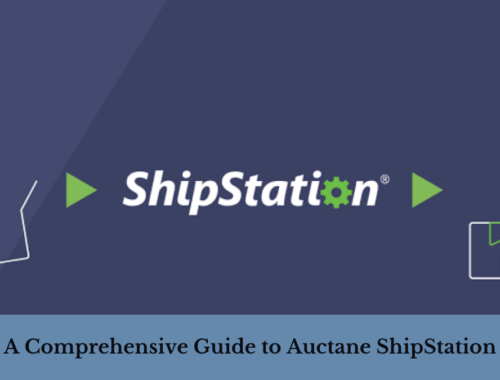
Model WG5WI-1 – A Comprehensive Guide
Introduction to Model WG5WI-1
Model WG5WI-1 is a sophisticated algorithmic framework designed to tackle intricate challenges across various fields, including artificial intelligence, data analytics, machine learning, and more. This model is known for its adaptability, efficiency, and ability to process complex datasets, making it a valuable tool for organizations and professionals aiming to enhance their technological capabilities.
Model WG5WI-1 is an advanced algorithmic framework excelling in AI, machine learning, and data analytics. It offers high adaptability, efficiency, and scalability for complex data processing tasks.
This guide will delve deep into the details of Model WG5WI-1, covering everything from its technical specifications to its applications and benefits. Whether you are a tech enthusiast, a professional in the field, or just someone curious about advanced technologies, this article will provide you with all the information you need about Model WG5WI-1.
What is Model WG5WI-1?
Overview of Model WG5WI-1
Model WG5WI-1 is an advanced algorithmic framework developed to address complex problems in various domains. It is designed to handle large-scale data processing, making it ideal for applications in artificial intelligence (AI), machine learning (ML), and data analytics. The model’s unique structure allows it to learn from data, adapt to new information, and make decisions based on patterns and trends.
Key Features of Model WG5WI-1
- Adaptability: Model WG5WI-1 can adjust its algorithms based on the specific requirements of different tasks, making it highly versatile.
- Efficiency: The model is optimized for speed and accuracy, ensuring that it can process large datasets quickly without compromising on the quality of the output.
- Scalability: Whether you’re working on a small project or a large-scale operation, Model WG5WI-1 can scale to meet the needs of your task.
Applications of Model WG5WI-1
Model WG5WI-1 is used in a wide range of applications, including but not limited to:
- Artificial Intelligence: Enhancing AI capabilities by improving the accuracy and efficiency of decision-making processes.
- Machine Learning: Facilitating the development of predictive models that can learn from data and make informed decisions.
- Data Analytics: Analyzing large datasets to uncover patterns, trends, and insights that can drive business decisions.
How Model WG5WI-1 Works
Technical Specifications
To fully understand the capabilities of Model WG5WI-1, it’s essential to delve into its technical specifications. This model is built on a robust architecture that allows it to process complex datasets with high accuracy.
Algorithm Structure
Model WG5WI-1 is based on a multi-layered algorithmic structure, where each layer is responsible for a specific aspect of data processing. The model employs both supervised and unsupervised learning techniques, allowing it to learn from labeled data as well as identify patterns in unlabeled data.
Data Processing Capabilities
One of the standout features of Model WG5WI-1 is its ability to process vast amounts of data in real-time. This is achieved through parallel processing, where multiple computations are carried out simultaneously, significantly reducing processing time.
Learning and Adaptation
Model WG5WI-1 uses advanced learning algorithms to adapt to new data. This feature is particularly useful in dynamic environments where the data landscape is constantly changing. The model can update its algorithms based on new information, ensuring that it remains relevant and accurate.
Step-by-Step Process of Model WG5WI-1
- Data Input: The model receives input data, which can be structured (e.g., databases) or unstructured (e.g., text, images).
- Preprocessing: The data is preprocessed to remove any noise or irrelevant information. This step ensures that the model only works with clean and meaningful data.
- Algorithm Application: The core algorithms of Model WG5WI-1 are applied to the processed data. Depending on the task, these algorithms can vary, but they generally involve pattern recognition, classification, and prediction.
- Output Generation: Once the data has been processed, the model generates output, which can take the form of predictions, classifications, or other relevant results.
Applications of Model WG5WI-1 in Various Fields
Artificial Intelligence and Machine Learning
In the fields of AI and ML, Model WG5WI-1 is used to develop more accurate and efficient models. Its ability to process large datasets quickly and adapt to new data makes it ideal for tasks such as image recognition, natural language processing, and predictive analytics.
Data Analytics
For businesses and organizations, data analytics is crucial for making informed decisions. Model WG5WI-1 helps analysts process and interpret large datasets, uncovering insights that might be missed with traditional methods. Whether it’s identifying customer trends, optimizing operations, or forecasting market changes, Model WG5WI-1 plays a vital role in driving business intelligence.
Healthcare
In healthcare, Model WG5WI-1 is used to analyze patient data, predict disease outbreaks, and develop personalized treatment plans. The model’s ability to handle complex datasets and provide accurate predictions makes it a valuable tool in the medical field.
Finance
In the finance sector, Model WG5WI-1 is used for risk assessment, fraud detection, and algorithmic trading. Its ability to process large volumes of financial data in real-time allows it to identify potential risks and opportunities, helping financial institutions make better decisions.
Supply Chain Management
For supply chain management, Model WG5WI-1 helps companies optimize their operations by analyzing data related to inventory levels, supplier performance, and logistics. This allows businesses to streamline their processes, reduce costs, and improve efficiency.
Advantages of Using Model WG5WI-1
High Accuracy
One of the key advantages of Model WG5WI-1 is its high accuracy. The model is designed to minimize errors and produce reliable results, making it a trustworthy tool for critical tasks.
Speed and Efficiency
Model WG5WI-1 is optimized for speed, allowing it to process large datasets quickly. This is particularly important in fields like finance and healthcare, where timely decisions can have significant impacts.
Flexibility and Adaptability
The flexibility of Model WG5WI-1 allows it to be used in a wide range of applications. Whether you’re working with structured or unstructured data, the model can adapt to meet the needs of your specific task.
Scalability
Model WG5WI-1 can scale to handle projects of any size. Whether you’re working on a small-scale analysis or a large-scale operation, the model can be scaled up or down to meet your needs.
Continuous Learning
Model WG5WI-1 employs continuous learning algorithms, allowing it to adapt to new data and improve over time. This feature ensures that the model remains relevant even as the data landscape changes.
Challenges and Considerations
Data Quality
The accuracy of Model WG5WI-1 is heavily dependent on the quality of the input data. If the data is noisy or contains irrelevant information, the model’s output may be less accurate. Therefore, it’s crucial to ensure that the data is properly preprocessed before being fed into the model.
Computational Resources
While Model WG5WI-1 is optimized for speed and efficiency, it still requires significant computational resources, especially when processing large datasets. This can be a limitation for organizations with limited computing power.
Ethical Considerations
As with any advanced algorithmic model, there are ethical considerations to keep in mind when using Model WG5WI-1. For example, the model’s decisions and predictions should be transparent and explainable to avoid bias and ensure fairness.
Cost
Implementing Model WG5WI-1 can be costly, especially for small organizations. The costs associated with computational resources, data storage, and model maintenance should be carefully considered before adopting this model.
Best Practices for Implementing Model WG5WI-1
Data Preprocessing
Ensure that the data is properly preprocessed before feeding it into Model WG5WI-1. This includes cleaning the data, removing any noise, and ensuring that it is structured in a way that the model can process effectively.
Regular Updates
Regularly update the model with new data to ensure that it remains accurate and relevant. This is particularly important in dynamic environments where the data landscape is constantly changing.
Monitor Performance
Continuously monitor the performance of Model WG5WI-1 to ensure that it is meeting the desired objectives. This includes tracking accuracy, speed, and any other relevant metrics.
Ethical Use
Ensure that the use of Model WG5WI-1 aligns with ethical guidelines. This includes ensuring transparency in the model’s decisions, avoiding bias, and respecting privacy and confidentiality.
Cost-Benefit Analysis
Conduct a cost-benefit analysis before implementing Model WG5WI-1 to ensure that the benefits outweigh the costs. Consider factors such as computational resources, data storage, and model maintenance.
Future of Model WG5WI-1
Continued Development
The development of Model WG5WI-1 is ongoing, with continuous improvements being made to enhance its capabilities. Future versions of the model are expected to be even more efficient, accurate, and adaptable.
Expansion of Applications
As the capabilities of Model WG5WI-1 continue to evolve, it is likely that its applications will expand into new fields. For example, the model could be used in areas such as autonomous vehicles, robotics, and smart cities.
Integration with Other Technologies
Model WG5WI-1 is likely to be integrated with other emerging technologies, such as blockchain and the Internet of Things (IoT). This integration will allow for even more advanced applications and use cases.
Frequently Asked Questions (FAQs)
1. What is Model WG5WI-1?
Model WG5WI-1 is an advanced algorithmic framework designed to tackle complex challenges in various fields, including AI, machine learning, and data analytics. It is known for its adaptability, efficiency, and ability to process large datasets
.
2. What are the key features of Model WG5WI-1?
Key features of Model WG5WI-1 include high accuracy, speed and efficiency, flexibility and adaptability, scalability, and continuous learning capabilities.
3. What are the applications of Model WG5WI-1?
Model WG5WI-1 is used in a wide range of applications, including artificial intelligence, machine learning, data analytics, healthcare, finance, and supply chain management.
4. What are the challenges of using Model WG5WI-1?
Challenges include ensuring data quality, managing computational resources, addressing ethical considerations, and managing costs associated with implementation.
5. How can I implement Model WG5WI-1 in my organization?
To implement Model WG5WI-1, ensure that your data is properly preprocessed, regularly update the model with new data, monitor its performance, and ensure that its use aligns with ethical guidelines.
Conclusion
Model WG5WI-1 represents a significant advancement in algorithmic frameworks, offering powerful capabilities for processing complex data and solving intricate challenges across various fields. Its adaptability, efficiency, and scalability make it a valuable tool for organizations and professionals alike.
As technology continues to evolve, the potential applications of Model WG5WI-1 are vast, and its role in shaping the future of AI, machine learning, and data analytics cannot be overstated. Whether you are looking to enhance your business operations, develop new AI models, or explore new frontiers in technology, Model WG5WI-1 offers the tools and capabilities you need to succeed.
By understanding the model’s features, applications, and best practices, you can harness the power of Model WG5WI-1 to drive innovation and achieve your goals.
You May Also Like

Exploring ASCIIÇ – Understanding the Concept and Its Implications
August 19, 2024
Comprehensive Guide to // Rivenisnet – Enhancing Digital Solutions for Businesses
July 21, 2024


